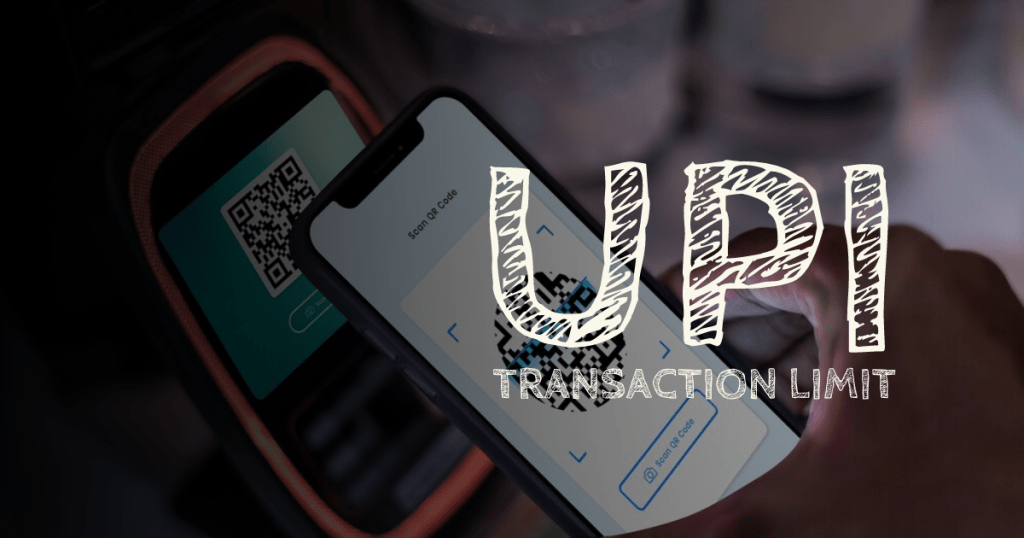UPI stands for Unified Payment Interface.
One of India’s greatest developments, pioneered by the National Payments Corporation of India (NPCI) is the Unified Payment Interface (UPI). The NPCI is governed by the RBI.
This system of payment has aided in instant bank-to-bank payments and online payments to personal or merchant accounts through mobile phones. This form of payment system is the most popular in India.
Important Update
| RBI Governor Shaktikanta Das on 8th August 2024 announced to increase the UPI limit for tax payments from Rs 1 lakh to Rs 5 lakh. Now, UPI transactions can be done upto 5 Lakh for tax payment purposes. |

Important Update on NPCI’s UPI Transaction ID
From 1st February 2025, UPI apps must generate transaction IDs only using alphanumeric characters (letters & numbers). Special characters such as @, #, $ etc. will not be allowed in transaction IDs.
Impact on UPI Transactions
- If any UPI transaction made with a special character in the transaction ID after the 1st Feb 2025, then transactions will be automatically declined.
- Users of such apps will not be able to make UPI payments.
Compliance Requirement for UPI Apps
- Payment apps must update their systems to ensure compliance.
- NPCI is strictly enforcing this rule for standardization and security.
UPI Daily Transaction Limit
The daily transaction limit set by the NPCI is ₹ 1 lakh per day. This daily limit of UPI transactions is the maximum amount of money that can be transferred in a single transaction.
Moreover, every user is entitled to conduct 20 transactions in a span of 24 hours.
When an user wants to transact more than 20 times, they will have to wait for a further 24 hours before being allowed to conduct transfers.
These limits may vary from bank to bank as some banks have imposed weekly or monthly limits on UPI transactions and have also lowered the NPCI limit to ₹ 25,000 for their users.
The ₹ 1,00,000 limit is an overall cap, banks may select an amount within that.
In the case of the number of transactions, the UPI app Google Pay has restricted it to 10 transactions per day, while PhonePe and AmazonPay allow 20 transactions per day, depending on the Banks.
Some cases of limits bank-wise:
| Banks | Daily Transaction Limit |
| Canara Bank | Rs 25,000 |
| State Bank of India | Rs 1,00,000 |
| HDFC Bank | Rs 1,00,000 (Rs 5,000 for new users) |
| ICICI Bank | Rs 10,000 |
| Axis Bank | Rs 1,00,000 |
| Bank of Baroda | Rs 25,000 |
For payments related to capital markets, collections insurance and foreign inward remittances, the transaction limit applicable is ₹ 2,00,000.
Payments related to educational institutions and healthcare, this limit is increased to Rs. 5 lakhs.
Interchange Fees
UPI Payments via digital wallets like PhonePe, Paytm and Amazon Pay have an interchange fee of up to 1.1% on certain merchant payments above ₹ 2,000. This is to be paid by the merchants and regular customers are not charged such transaction fees.
Interchange fees are also applicable on UPI transactions made through prepaid payment instruments like wallets. These fees depend on the merchant category.
- 0.5% fees on transactions related to fuel.
- 0.7% is chargeable on the post office, telecom, utilities, agriculture and education.
- 0.9% is attracted on supermarket payments.
- 1.1% fee is chargeable on insurance, mutual funds and railway services.
The merchant who is accepting the UPI payment is responsible for paying the interchange fee.
For example
If a customer uses UPI to make a payment through a Google Pay QR code at a store, the interchange fee is to be borne by the merchant. The merchant becomes responsible for remitting this fee to the payment service provider, in this example, Google Pay.
Customers do not have to pay any interchange fees for UPI payments made through wallets as interchange fees are only applicable on Peer to Peer (P2P) ie transferring funds between individuals and Peer to Merchant (P2M) transactions ie customers making payments to merchants for purchases, conducted through the prepaid payment instruments (PPIs). These fees are borne by the merchant when the customer uses the wallets for transactions.
Click here to know about Senior Citizen Savings Scheme.
FAQs
The daily transaction limit for Google Pay in India is INR 1,00,000.
You can perform a maximum of 20 transactions in 24 hours on GPay.
No, you cannot increase the daily transaction limit as it is set by the National Payments Corporation of India (NPCI).